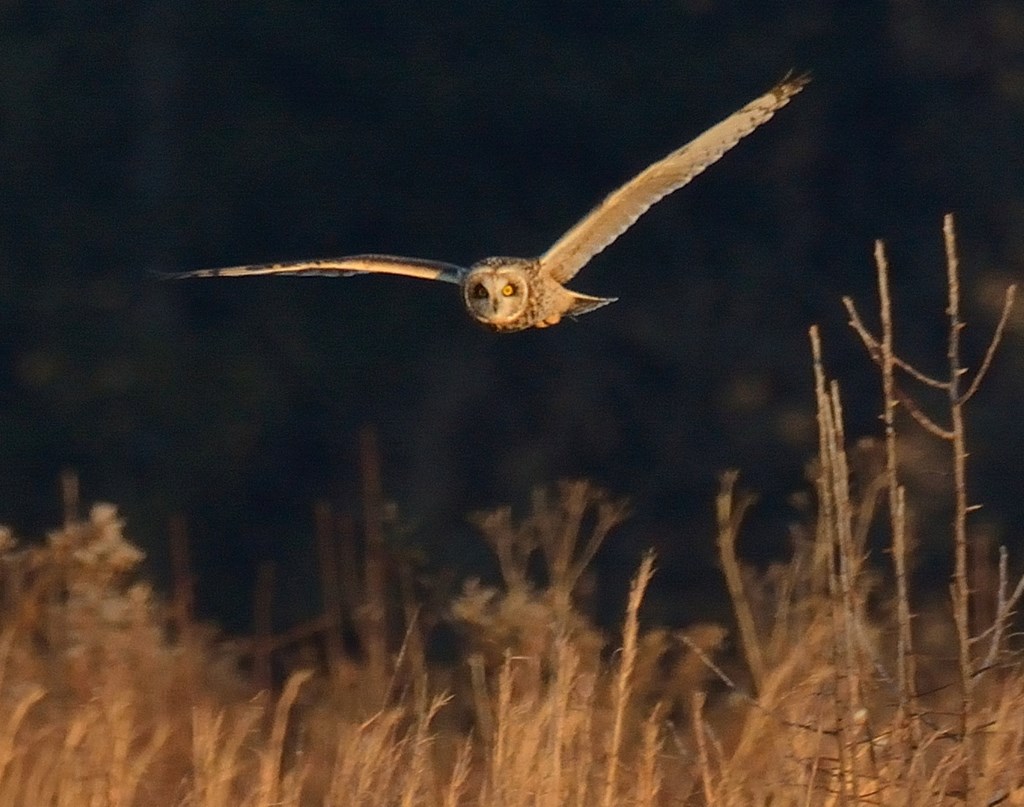Short-eared Owl

A.K.A. the Marsh Owl
- The Short-eared Owl has a worldwide distribution
- They are listed as endangered in Pennsylvania and many other northeastern states,
- although their population is considered stable worldwide
- Short-eared Owls nest in a scrape on the ground among tall vegetation and weeds
- They are often found in habitats alongside Northern Harriers
Identification Features
- Medium-sized owl with long, thin wings and a short tail
- Their backs are light sandy brown and streaked with darker brown. Their belly is beige or light brown with darker brown vertical streak
- They have dark triangles, like sunglasses around their bright yellow eyes
- They get their name from the small feathers or "ear tufts" on their head
What size is a Short-eared Owl?
- Wingspan39-44"
- Length13.5-17"
- Weight10-15 oz.
Flight Behavior
Short-eared Owls typically fly low to the ground in buoyant flight. They commonly hold their wings above their back in a dihedral or V-shape.
Vocal Call
Fairly quiet, except during the breeding season. Most common call is a short eee-yup. Courtship calls include a subtle hoo-hoo-hoo-hoo and toot-toot-toot-toot. Other sounds include yaps, yelps, wails, squeals, shrieks and hissing.
Feeding Habits
Short-eared Owls are crepuscular, most active at dawn and dusk, and can be seen hunting low over fields during the daytime. They prefer large, open fields and marshes for hunting and nesting. Their preferred prey items are small mammals, especially voles and mice. They will occassionally prey upon bats, snakes, small birds and insects.